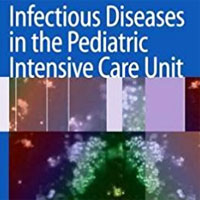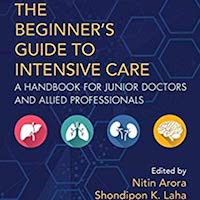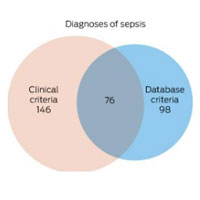Tag: ICU

Less or More Hemodynamic Monitoring in Critically Ill Patients
The use of echocardiography should be initially encouraged in patients with shock to identify the type of shock and to select the most appropriate therapy. The use of more invasive hemodynamic monitoring techniques should... read more

Nutrition Support for the Critically Ill
This text provides a review of the current knowledge in both the mechanics of nourishing the critically ill and the metabolic and immunological roles nutrients play. In-depth chapters discuss disease-related malnutrition... read more

Systematic Review of the Effects of ICU Noise on Sleep of Healthy Subjects and the Critically Ill
ICU patients exhibit disturbed sleeping patterns, often attributed to environmental noise, although the relative contribution of noise compared to other potentially disrupting factors is often debated. We therefore systematically... read more

Infectious Diseases in the Pediatric ICU
Infants and children are at high risk of acquiring infections and this is most critical on the pediatric intensive care unit, as these infections have serious effects on mortality. Infectious Diseases in the Pediatric Intensive... read more

The Beginner’s Guide to Intensive Care: A Handbook for Junior Doctors and Allied Professionals
Ideal for any medic or health professional embarking upon an intensive care rotation or specialism, this simple bedside handbook provides handy, pragmatic guidance to the day-to-day fundamentals of working in an intensive... read more

A Framework for Increasing Trust Between Patients and the Organizations That Care for Them
Trust matters in health care. It makes patients feel less vulnerable, clinicians feel more effective, and reduces the imbalances of information by improving the flow of information. Trust is so fundamental to the patient-physician... read more

Poor Hospital Design Has an Impact on Staff, Patients, and Healthcare
Many hospitals in which I have worked have struggled with finances over the last 5 years. There has often been a ban on capital investment on new physical infrastructure projects even extended to repairs in some circumstances.... read more

Antibiotics for the Critically Ill Patient
We spend a lot of time obsessing over the finer details of critical care: which fluid is best? which vasopressor is best? will another liter of fluid help? These details are important, but for a septic patient something... read more

Sepsis Incidence and Mortality are Underestimated in Australian ICU Administrative Data
When compared with the reference standard — prospective clinical diagnosis — ANZICS CORE database criteria significantly underestimate the incidence of sepsis and overestimate the incidence of septic shock, and also result... read more

Benzodiazepine Use and Neuropsychiatric Outcomes in the ICU
The majority of included studies indicated that benzodiazepine use in the ICU is associated with delirium, symptoms of posttraumatic stress disorder, anxiety, depression, and cognitive dysfunction. Future well-designed studies... read more

Corticosteroid Treatment in Critically Ill Patients with Severe Influenza Pneumonia
Administration of corticosteroids in patients with severe influenza pneumonia is associated with increased ICU mortality, and these agents should not be used as co‑adjuvant therapy. A total of 1846 patients with primary... read more

Assessment of the Safety of Discharging Select Patients Directly Home From the ICU
The discharge of select adult patients directly home from the ICU is common, and it is not associated with increased health care utilization or increased mortality. Among the 6732 patients included in the study, 2826 (42%)... read more

Vasodilatory Shock in the ICU and the Role of Angiotensin II
With the approval and release of angiotensin II, a new vasoactive agent is now available to utilize in these patients. Overall, the treatment for vasodilatory shock should not be a one-size fits all approach and should be... read more

Adherence to Guidelines for the Management of Donors After Brain Death
Guideline adherence to an expert panel predefined care set in brain death (DBD) donor management proved moderate leaving substantial room for improvement. An importance-performance analysis can be used to improve implementation... read more




